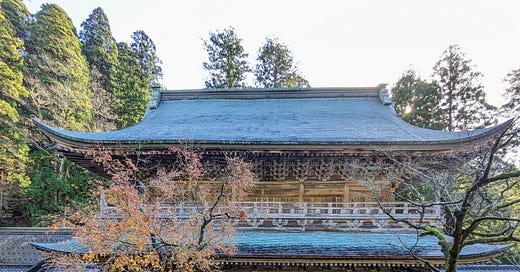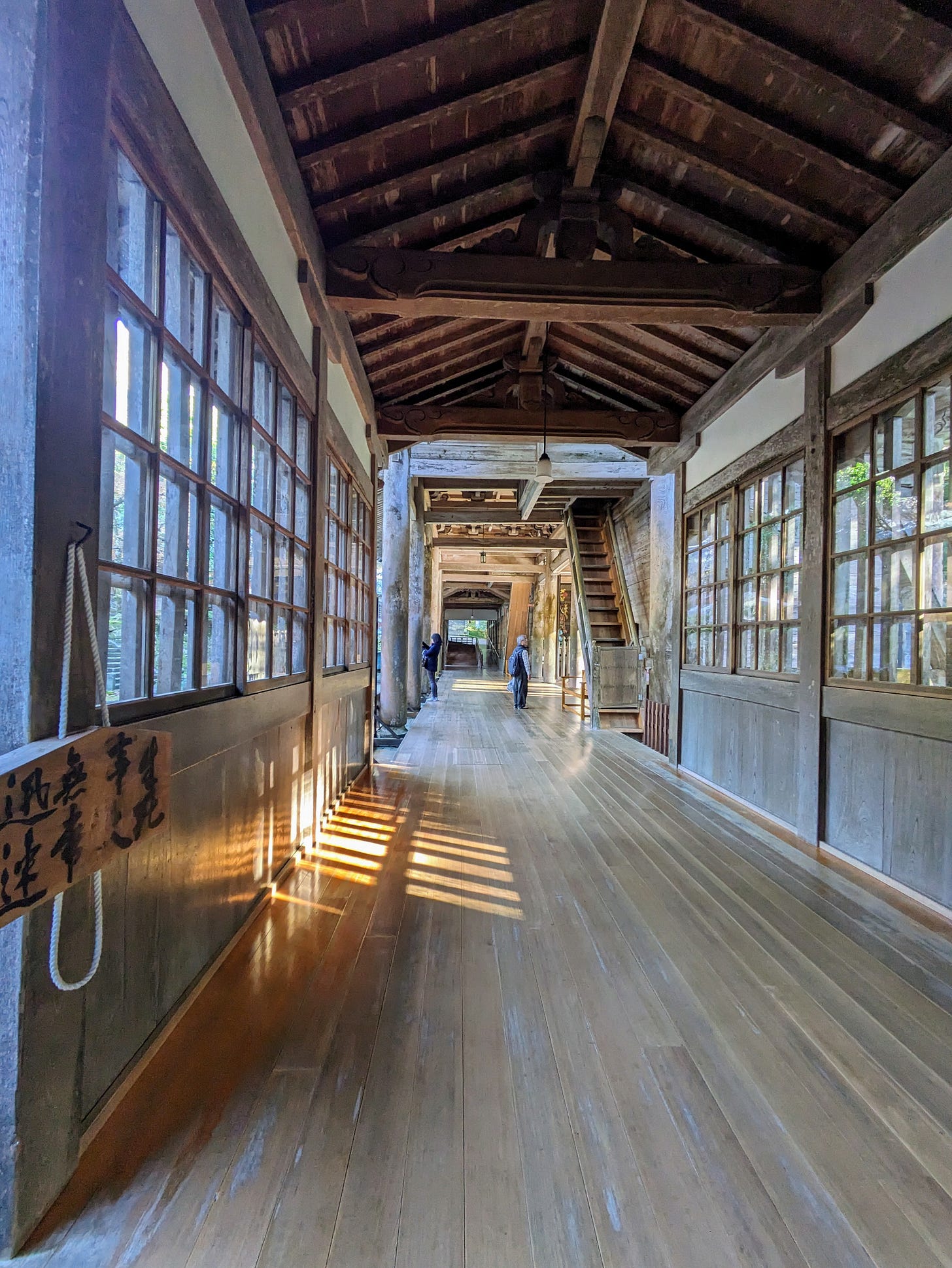The cedar trees of Eiheiji stretch skyward, their branches filtering sunlight into a mosaic of shadow and light along the moss-laden paths. These towering cedars, over 600 years old, exude the capacity of being able to accept anything.
In 1244, the Buddhist priest, poet, and philosopher, Dogen arrived here in Fukui after a period of study and introspection in Kyoto and China. Dissatisfied and searching for clarity, he found solace in Fukui’s mountainous countryside. Here, he established the Soto sect of Zen Buddhism, now the largest of Japan’s three traditional Zen sects. Eiheiji, the sect’s head temple, lies behind a large wooden gate crafted without nails or fittings, separating the temple from the outside world. Monks pass through this gate only twice — once upon entering the temple and once again upon completing their training.
Inside the temple, the large wooden stairways loom heavy, cloaked in silence. Monks gather in the Buddha hall in front of the statues of the three main principal Buddhas symbolizing the present, past and future. Their chants begin, a low determined murmur, as visitors wait in quiet lines to offer rice grains. With the rhythm of prayer and chant, the air comes alive once again, lifting the temple’s weighty silence and allowing one to breathe.
Places like Eiheiji removed from the urban mainstream, carry an enduring allure. A Zen temple in the forest, an elite private boarding school, a cottage nestled in the countryside, a distant, remote country — these kinds of places stir the imagination, offering glimpses of alternate paths to a life burdened by the distractions of modernity. Yet the idyllic notion of retreat comes with its own realities and demands.
Eiheiji is not just a sanctuary for spiritual education but also a place of rigor and discipline for the 200 or so monks and nuns who live and train here. They rise at four in the morning, sit facing the wall and practice zazen — a form of seated meditation where one lets thoughts come and go without being affected by them. Thinking about nothing is difficult and so if your mind is led astray, it is acceptable to seek assistance. Attending monks come and tap you gently on the shoulder with a stick to nudge one into a state of concentration. For Dogen, enlightenment was not a far-off ideal but a state realized through consistent, mindful practice.
Non attachment, and a solitary focus on training the mind and body may seem like an escape from the very essence of being human. In George Orwell’s essay, ‘Reflections on Gandhi’, he writes, ‘If one could follow it to its psychological roots, one would, I believe find that the main motive for ‘non-attachment’ is a desire to escape from the pain of living, and above all from love, which, sexual or non-sexual, is hard work.’ The path to a monastic life at Eiheiji is varied. Some monks enter because their families manage temples, others are inspired by the teachings of the Soto sect. In essays and interviews, monks speak of Eiheiji’s rigorous training but also of solace in mindful routines—like gathering wild mugwort, yam, and Japanese pepper, which they transform into tempura served with udon noodles.
The ceramics artist Tanaka Sajiro chanced upon Eiheiji in his late thirties. He started his career as a motor boat racer, then discovered Buddhism and pottery, and went to Eiheiji to train. Now in his eighties, he was recently featured on the NHK radio program, ‘Religion Time’. He talked about his remote life living on a mountainous cliff in Kyushu, and about the influence of Zen on his relationship with work, ‘I don’t have a television so I just spend all my time working, making pots.’
For a regular visitor who may not be training to be a monk or a potter, Eiheiji quiet offers temporary reprieve, a way to glimpse a more focused self. Yet upon return to that other life, the one that ebbs and flows with external distractions, internal challenges, and other mortal inhibitions, how then, ought a passenger of the modern world find the balance, to get to the essence of something, to push oneself to the slightly elevated version of oneself as a daily practice? Is it through daily chores, or through snatched slots of meditation? The answer may change for each one, and may not even be found in spirituality. It may lie hidden somewhere in the literature, the conversation, the actions of those around, the subtext, the realms of a vast world. It may not even be a singular answer, but an entire, ongoing process that needs nurturing and self acceptance. In his spiritual book, ‘Let your life speak’, Parker J. Palmer writes, ‘My life is not only about my strengths and virtues; it is also about my liabilities and my limits, my trespasses and my shadow. An inevitable though often ignored dimension of the quest for “wholeness” is that we must embrace what we dislike or find shameful about ourselves as well as what we are confident and proud of.’
Outside Eiheiji, the river flows around large rocks, its waters swirling in black and white currents. Many have walked these cedar-lined paths and many more will follow. In the forest, a small orange and black bird, a redstart, calls. Is he calling for his mate or has he discovered food or is he simply practicing his call? To you, his call is unfathomable but joyous. It brings forth three suggestions — be gentle, be patient, and never forget to practice.
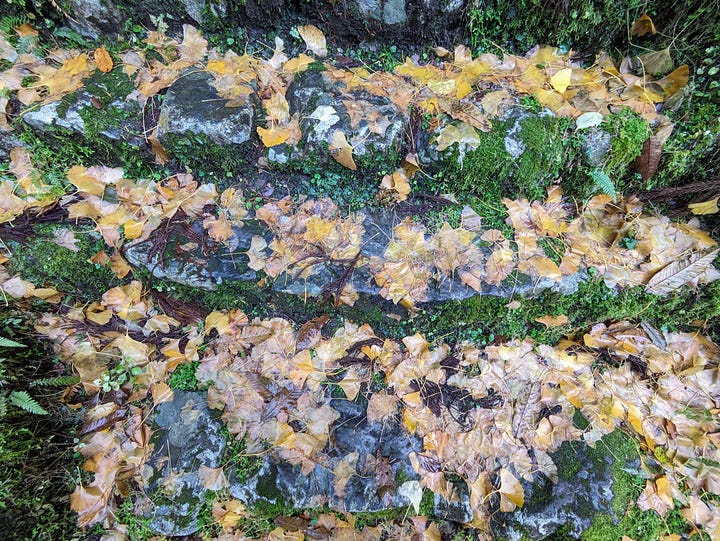

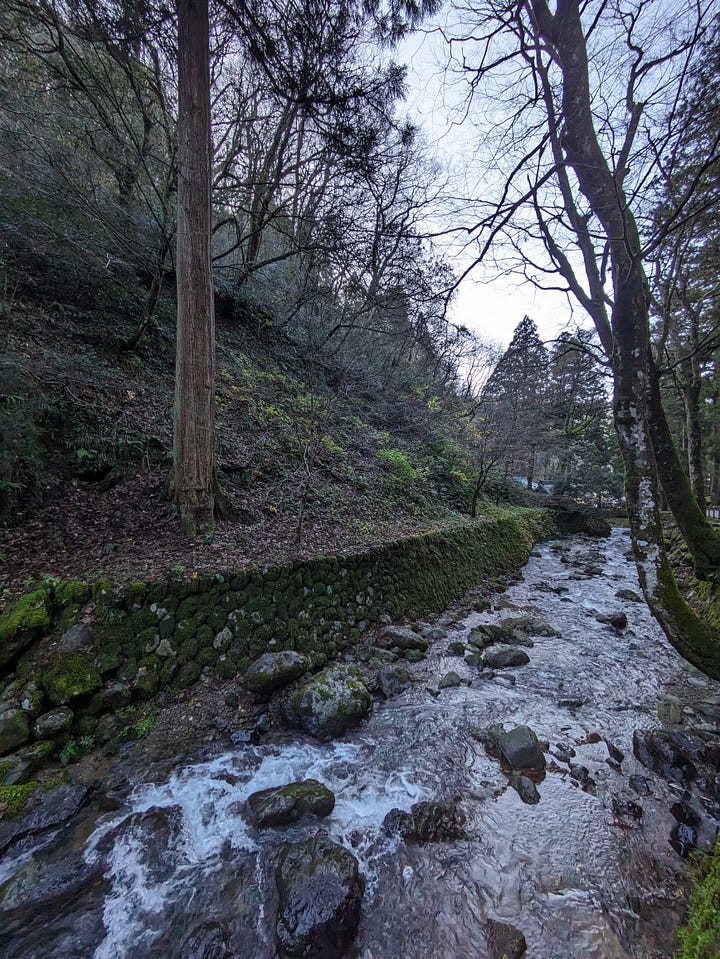
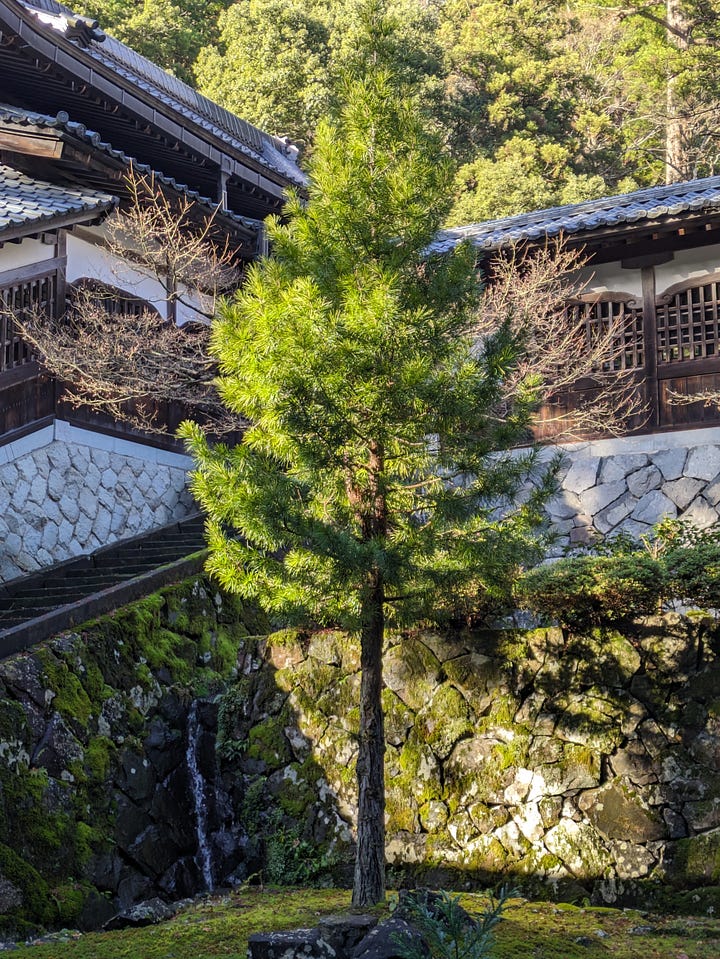
Access – Bus from Fukui station. Find more information here
Selected Sources
https://daihonzan-eiheiji.com/
https://www.nhk.jp/p/syukyo-jikan/rs/JWQ88ZVWQK/episode/re/XX2Z7NVY7P/
